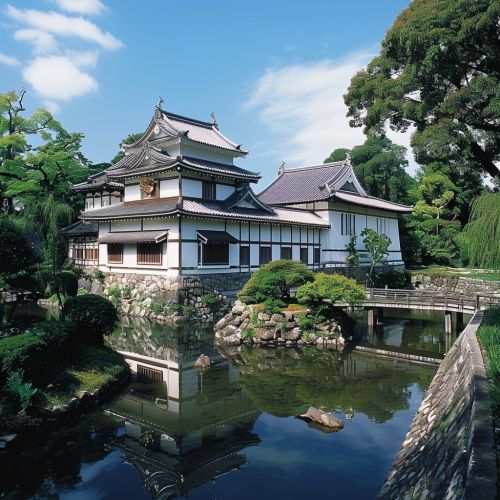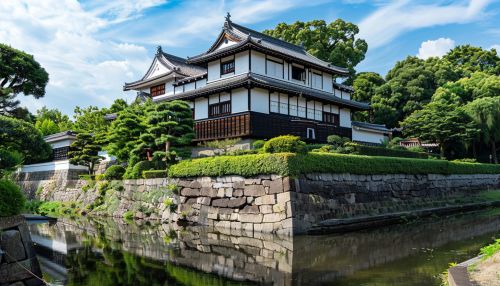Amagasaki
Introduction
Amagasaki is a city located in Hyōgo Prefecture, Japan. It is part of the Keihanshin metropolitan area, which includes the cities of Osaka, Kobe, and Kyoto. Amagasaki is known for its industrial base, historical significance, and cultural heritage. This article delves into the city's history, geography, economy, culture, and notable landmarks, providing a comprehensive and detailed examination of Amagasaki.
History
Early History
Amagasaki's history dates back to the Heian period (794-1185), when it was a small fishing village. The name "Amagasaki" is believed to have originated from the word "Ama," meaning "fisherwoman," reflecting the town's early reliance on fishing. During the Kamakura period (1185-1333), the area began to develop as a strategic location due to its proximity to Osaka Bay and the Seto Inland Sea.
Feudal Era
In the Sengoku period (1467-1603), Amagasaki became a significant military stronghold. The construction of Amagasaki Castle in 1617 by Ikeda Mitsumasa marked the city's rise in prominence. The castle served as a defensive fortification and a symbol of the ruling clan's power. During the Edo period (1603-1868), Amagasaki thrived as a castle town under the control of the Tokugawa shogunate.
Meiji Restoration and Modernization
The Meiji Restoration in 1868 brought significant changes to Amagasaki. The abolition of the feudal system and the establishment of a centralized government led to rapid industrialization. Amagasaki's strategic location and access to transportation networks made it an ideal site for factories and manufacturing plants. By the early 20th century, the city had become a major industrial hub, producing textiles, chemicals, and machinery.
Geography
Amagasaki is situated in the southeastern part of Hyōgo Prefecture, bordered by Osaka to the east and Nishinomiya to the west. The city covers an area of approximately 50 square kilometers and has a population of around 450,000 residents. The Yodo River flows through the city, providing a vital water source for both industrial and residential use.
Climate
Amagasaki experiences a humid subtropical climate, characterized by hot, humid summers and mild winters. The average annual temperature is around 16°C, with August being the hottest month and January the coldest. The city receives an average annual rainfall of approximately 1,300 millimeters, with the rainy season occurring in June and July.
Economy
Amagasaki's economy is heavily industrialized, with a diverse range of manufacturing sectors. The city's strategic location within the Keihanshin metropolitan area has made it a vital economic center.
Manufacturing
The manufacturing sector in Amagasaki is dominated by heavy industries, including steel production, chemical manufacturing, and machinery. Major companies, such as Sumitomo Metal Industries and Mitsubishi Heavy Industries, have established large-scale operations in the city. The presence of these industries has contributed significantly to the local economy and employment.
Technology and Innovation
In recent years, Amagasaki has also become a hub for technological innovation. The city hosts several research and development centers, focusing on advanced materials, robotics, and environmental technologies. Collaboration between industry and academia has fostered a vibrant ecosystem for innovation and entrepreneurship.
Culture
Amagasaki boasts a rich cultural heritage, with numerous festivals, traditional crafts, and historical sites.
Festivals
One of the most notable festivals in Amagasaki is the Amagasaki Danjiri Matsuri, held annually in October. The festival features elaborate wooden floats, known as "danjiri," which are paraded through the streets accompanied by traditional music and dance. The event attracts thousands of visitors and is a celebration of the city's history and community spirit.
Traditional Crafts
Amagasaki is renowned for its traditional crafts, particularly Amagasaki-yaki pottery. This unique style of pottery, characterized by its simple yet elegant designs, has been produced in the region for centuries. Local artisans continue to preserve and promote this craft, offering workshops and exhibitions to showcase their work.
Landmarks
Amagasaki is home to several notable landmarks that reflect its historical and cultural significance.
Amagasaki Castle


Amagasaki Castle, originally built in 1617, was a key defensive structure during the feudal era. Although the original castle was demolished in the Meiji period, a reconstructed version now stands as a symbol of the city's heritage. The castle features traditional Japanese architecture and offers panoramic views of the surrounding area.
Amagasaki Cultural Center
The Amagasaki Cultural Center is a modern facility that hosts a variety of cultural events, including concerts, theater performances, and art exhibitions. The center aims to promote cultural exchange and enrich the lives of residents and visitors alike.
Transportation
Amagasaki is well-connected by an extensive transportation network, facilitating easy access to neighboring cities and regions.
Railways
The city is served by several railway lines, including the JR West Tōkaidō Main Line, the Hanshin Electric Railway, and the Hankyu Railway. These lines provide direct connections to major cities such as Osaka, Kobe, and Kyoto, making Amagasaki a convenient location for commuters.
Highways
Amagasaki is also accessible by a network of highways, including the Meishin Expressway and the Hanshin Expressway. These routes facilitate efficient transportation of goods and services, supporting the city's industrial activities.
Education
Amagasaki places a strong emphasis on education, with a range of institutions catering to different levels of learning.
Primary and Secondary Education
The city operates numerous public and private schools, providing quality education from elementary to high school levels. The curriculum is designed to foster academic excellence, critical thinking, and social responsibility.
Higher Education
Amagasaki is home to several higher education institutions, including Amagasaki University and Hyogo College of Medicine. These institutions offer a wide range of undergraduate and postgraduate programs, contributing to the development of skilled professionals in various fields.
Healthcare
Amagasaki has a well-developed healthcare system, ensuring access to medical services for its residents.
Hospitals
The city is equipped with several hospitals and medical centers, including the Amagasaki General Medical Center and the Hyogo Prefectural Amagasaki Hospital. These facilities provide comprehensive healthcare services, ranging from primary care to specialized treatments.
Public Health Initiatives
Amagasaki's public health initiatives focus on preventive care, health education, and community wellness. Programs such as vaccination drives, health screenings, and fitness campaigns aim to promote a healthy lifestyle among residents.
Environmental Sustainability
Amagasaki is committed to environmental sustainability, implementing various initiatives to reduce its ecological footprint.
Green Spaces
The city has developed numerous parks and green spaces, such as Amagasaki Central Park and Shioya Park. These areas provide recreational opportunities for residents and contribute to the overall environmental quality.
Waste Management
Amagasaki has implemented an efficient waste management system, emphasizing recycling and waste reduction. The city operates several recycling centers and promotes community participation in waste segregation and recycling efforts.
Conclusion
Amagasaki is a city with a rich historical background, a robust industrial base, and a vibrant cultural scene. Its strategic location within the Keihanshin metropolitan area, combined with its commitment to innovation and sustainability, makes it a dynamic and thriving urban center. Whether exploring its historical landmarks, participating in cultural festivals, or engaging in cutting-edge research, Amagasaki offers a unique and enriching experience for residents and visitors alike.
See Also
- Osaka
- Kobe
- Kyoto
- Heian period
- Kamakura period
- Sengoku period
- Edo period
- Meiji Restoration
- Yodo River
- Sumitomo Metal Industries
- Mitsubishi Heavy Industries
- Amagasaki Danjiri Matsuri
- Amagasaki-yaki
- JR West Tōkaidō Main Line
- Hanshin Electric Railway
- Hankyu Railway
- Meishin Expressway
- Hanshin Expressway
- Amagasaki University
- Hyogo College of Medicine
- Amagasaki General Medical Center
- Hyogo Prefectural Amagasaki Hospital
- Amagasaki Central Park
- Shioya Park
